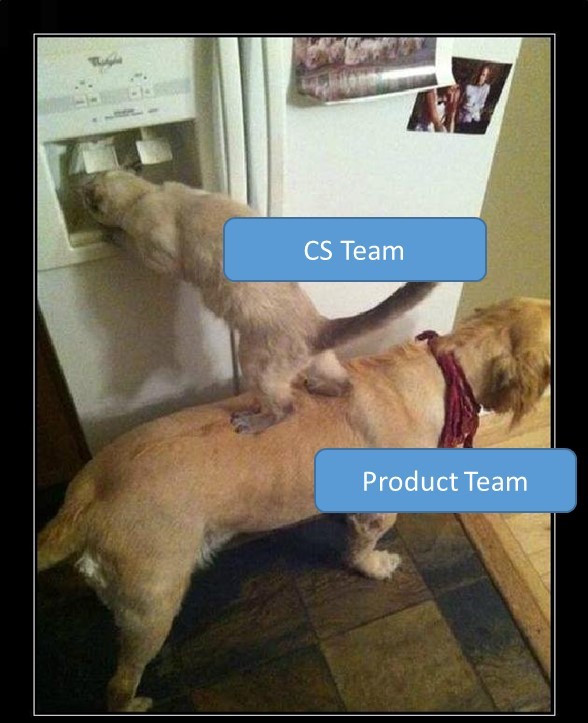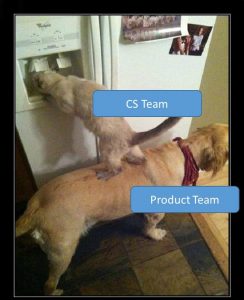Search Waypoint Resources
For Sale: Customer Feedback (Part 2)

Editor’s note: Here’s a quick one-sentence recap of part one: Giving bonuses based on feedback scores and focusing on good feedback scores are generally bad ideas. If you didn’t read it, feel free to check it out here.
In part 1 of this two-part series you learned the hazards of incentivizing feedback and feedback management. In this segment, we’ll take a look at some ways to get helpful feedback without corrupting your management system.
As I touched on in part 1, anything linking feedback to compensation needs to incorporate gaming into the equation when validating scores. And to account for gaming you need more than 1 indicator in order to account for gaming it correctly.
There is but one goal for feedback: “To find out to what extent are we meeting customer expectations?”
To meet (or exceed) customer expectations, you need to create the right organizational behaviors. Here’s a guideline to help with that:
Customer service is an attitude not a department
We’ve all heard the expression: “It takes an entire village to raise a child.” My expression is similar, it says: “It takes an entire company to meet customer expectations.” It doesn’t take a rocket scientist to decipher my expression. It simply means “customer success” isn’t limited to the Customer Success department. Your company’s score is a compilation of how well every department is kicking in to deliver great customer experiences that accelerate success for the customer. Customer success is divided into two functions:
- Setting expectations – This is typically done by your sales and marketing teams, but also 3rd parties such as competitors and other vendors with whom the customer interacts, as well as other people and systems that communicate with your customers.
- Delivering on expectations – This is performed by teams such as account management, the products/services delivering your company’s capabilities, etc.

Your customer success “score” reflects the alignment of these two functions.
Nobody raves about average
So based on these two functions, there are two ways to improve your “score”:
- Change expectations
- Change delivery
Everyone in the company has a role in one of these two functions. The key here is to align the compensation/incentive with their role.
- Account Managers know the players in the account. The ones that want to be successful in their jobs strive for strong relationships with the key players. The smart move is to compensate them based on that fact:
What percentage of the CSMs/AMs accounts have the right type (or right number) of contacts? Is it the right mix of decision makers, key influencers, power users, etc? And of those people, how many are being invited and (more importantly) responding to a request for feedback? (click here for our discussion on response rates and how feedback is a sign of relationship strength). The CSMs that have the right mix of contacts and good response rates get rewarded. But understand there is a point when the account manager is no longer influencing the score and is starting to make the process feel like gaming. (As we discussed in part 1.)
- People not directly touching accounts (i.e. the front-line peeps) should be focused on improving the score. Unless you have 100% coverage, 100% response, and +100 NPS (and who does?) then you definitely have room to grow.
You want to measure growth in feedback over time and not a fixed score.
See blogs on how to set score targets.
To accomplish this you need to understand your key drivers, then determine how much an improvement in those drivers could improve the end results.
Whether you use correlation or regression techniques, your key drivers should tell you what impact “customer experience attribute” outcomes you seek (such as more “word-of-mouth” recommendations).
So for instance, if it looks like your feedback recommendations are product-centric, then determine how much a product adjustment should improve your overall “score.” Once you have a decent understanding of the relationships between the variables, set product-related improvement targets and not “Overall Recommend” targets for the product team (i.e. the product team should focus on improving the “product” ratings, and assuming you did your analysis correctly you should see corresponding improvements in the “overall ” score).
- Leadership teams are ultimately the people that impact the overall score by cross-functional collaboration. Meaning they can do things like allocate resources – even move money from one group to another – in order to improve customer satisfaction. These people should be compensated based on improvements in NPS. See Real NPS not perceived NPS.
Money can’t buy you love
The moral of the story is that one size doesn’t fit all. Sure it might feel good to compensate based on “scores”, but the problem is, it doesn’t foster the right behavior needed to accelerate profitable growth. It’s OK to compensate based on performance, just make sure it is the right measurement of improvement.